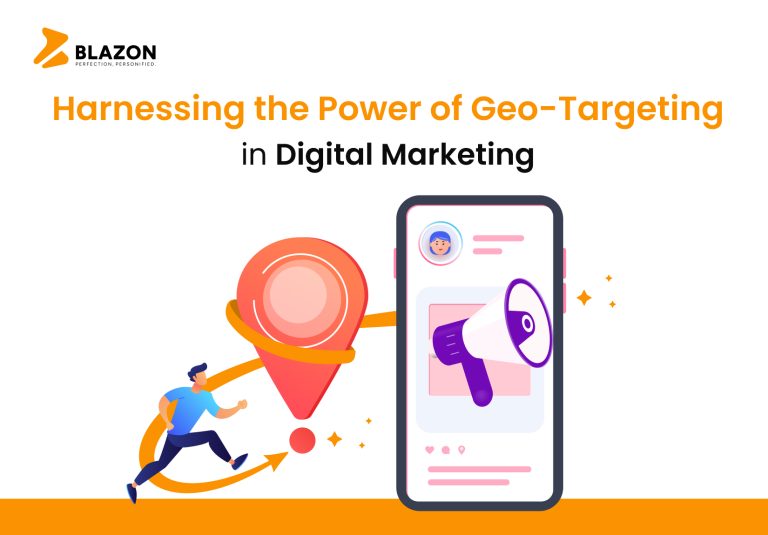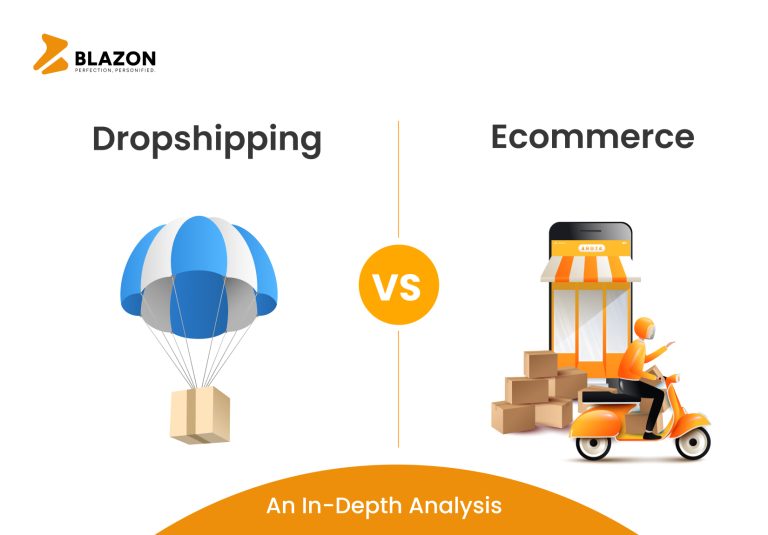Harnessing the Power of Geo-Targeting in Digital Marketing

In the digital marketing era, geo-targeting in digital marketing is making waves. Brands today make use of all the resources at their disposal to gather pertinent data about their consumers and be able to offer a customized experience. Utilizing geo-tagging and geo-targeting in your location-based marketing plan is one of the more effective ways to achieve this.
Even though this is an old practice, many businesses still don’t use it or don’t completely understand how location-based marketing and geo-targeting in digital marketing operate. At Blazon, we can help you achieve your digital marketing goals by using the power of local SEO and geographic segmentation. This leaves us with a crucial question.
So how can you use geotagging to improve the online performance and visibility of your business?
The fundamentals of geo-targeting in digital marketing are covered in this blog, and we have touched upon how you can harness the power of geo-targeting in digital marketing. Stay with us till the end.
What is geo-tagging?
Geo-targeting in digital marketing has gained momentum in the last few years. Adding geographic data, such as longitude and latitude coordinates, to digital media, such as images, videos, or text, is referred to as geo-tagging. The place of the media’s creation can be determined with the aid of this information, which also gives the content helpful context and metadata. Social media sites frequently use geo-targeting in digital marketing, which lets users mark their posts with their location. This geographic segmentation makes it simple for others to find information that is connected to a certain location. It can also be used for scientific investigations like observing weather trends or tracking wildlife.
Geo-targeting in digital marketing can be carried out manually or automatically. While automated tagging uses the device’s GPS or other location-based services to automatically tag the media with the current location, manual tagging requires manually entering the coordinates. With geographic segmentation, in rare circumstances, users can geotag media that wasn’t initially tagged by adding location data to it after the fact.
Location-based marketing and geotagging have many advantages. By looking for content pertaining to a certain location, it might assist people in learning about new locations and experiences. Businesses can use geo-targeting in digital marketing to target their advertising to clients in a particular location. Furthermore, geo-tagging enables users to better record their own journeys and experiences and share them with others. However, because geo-tagging might reveal a user’s position and possibly put them in danger, it’s crucial to be aware of the potential privacy dangers linked to it.
How does geo-tagging work?
Geo-targeting is the process of locating, tracking, and/or utilizing data about a person’s location in order to present them with content that is pertinent to their current location.
GPS data, IP addresses, social network tags, mobile app settings, location-specific search engine queries, and manual entry are all sources of information used to determine a person’s location. To put it another way, a person’s device may automatically supply it or they may mark it manually.
Businesses use geo-targeting to personalize their customers’ experiences and deliver information that is more pertinent to them. This is why geo-tagging is a big boost for local SEO.
Harnessing the power of geo-targeting in digital marketing
Harnessing the power of geo-targeting in digital marketing is no rocket science. In the next section of our blog, we will discuss how geo-tagging can help your digital marketing strategy.
#1 Strengthen your local SEO
Your local SEO efforts can be improved by adding geo-tags to your website and uploading photographs, thus, making you more visible in pertinent local searches.
As far as location-based marketing goes, you can make your website’s content more accessible to local users looking for comparable goods and services by including geo-tagged photographs on the homepage, contact page, and other pertinent pages.
Additionally, geo-targeting in digital marketing should be used to indicate locales if your website has many localized versions. By doing this, Google will have an easier time providing consumers with the correct version.
However, experience shows that any little bit of data you supply helps, so why not do it? Beyond doubt, Google has the ability to extract the respective metadata automatically based on the information in your content.
Make sure your Google My Business account is also optimized with the appropriate geo-targeted keywords and has engaging, high-quality images that have all the required metadata, geotagging, and pertinent alt text.
#2 Give your Instagram strategy a boost
Digital marketing experts agree that as far as geographic segmentation goes, Instagram makes the most of geo-targeting and geo-tagging, just like Google does.
To enhance your location-based marketing, you can add location-relevant hashtags and tags to your published material to make it more visible to users in these areas. This will increase the interaction with your posts and could lead to the development of a closer relationship with local followers. It will also help you get the most out of geo-targeting in digital marketing.
Additionally, you will be able to get better followers—individuals who are more likely to come to your physical location and utilize your services.
Furthermore, with local SEO, you may learn more about your audience’s geographic distribution, engagement patterns across geographies, and peak activity hours using Instagram’s business profile capabilities.
Based on this knowledge, you may adjust your geo-targeting in digital marketing strategy, target your posts more effectively, increase your presence, and enhance the effectiveness of your profile.
#3 Make sure that your Facebook ads and posts are accurately targeted
Facebook advertisements enable sophisticated segmentation depending on the geographic location of your audiences and precise geo-targeting. Cities, regions, and even entire nations can be your targets as a part of location-based marketing. Additionally, you may set up various ad packs that target each of these based on your geo-targeting in your digital marketing campaign.
The idea is that because the Facebook audience, including your followers, might be so diverse, it can be challenging to get results that involve genuine interaction and conversions. You must choose the appropriate demographics to accomplish this.
However, there is a greater likelihood that the individuals who engage will be genuinely interested in your event and may visit it if you geo-tag your posts and concentrate your ads on a specific diameter on the map.
With geo-targeting in digital marketing, you’ll obtain better results and save money by avoiding wasting it on pointless likes and vanity metrics.
#4 Enhance the effectiveness of your PPC ads
With geo-targeting in digital marketing, precise geo-targeting is possible with Google’s PPC ads. The ads will appear in the search results for pertinent queries after you pin a location on the map and choose your intended target area. Depending on additional criteria, Google may show it to users who have recently visited the location or indicated interest in it, or it may use the location of the users conducting the searches.
Additionally, it makes sense to design and optimize PPC advertising for each of your locations when you have more than one so that you can more effectively target people depending on their geolocation. You can modify the copy to account for cultural variations, add offers and information specific to a particular place, and, in general, make an advertisement that the user is more inclined to click.
Conclusion
The internet offers customers and brands limitless commercial prospects, which is one of its greatest advantages. Localized needs, though, may make this more of a hindrance than an advantage.
Making your business more accessible, attracting new consumers, and developing a relationship with your audience can all be done by knowing where your customers are and letting them know where you are.
With geo-targeting in digital marketing, two technologies, geo-tagging and geo-tracking, let you place your brand more effectively both online and on a map. By doing this, you might appear on local users’ radars who are looking for similar goods and services and leave an impression where it counts.
If you wish to embrace geo-targeting in digital marketing and location-based marketing, you can reach out to our team of experts at Blazon. Depending on your business needs and your digital marketing goals, our professionals at Blazon will offer you workable solutions.
Get in touch with us now!
© 2023 Blazon All Rights Reserved.









 +91 97866 99000
+91 97866 99000 (720) 500-3435
(720) 500-3435 +4915168619030
+4915168619030





Leave a Reply